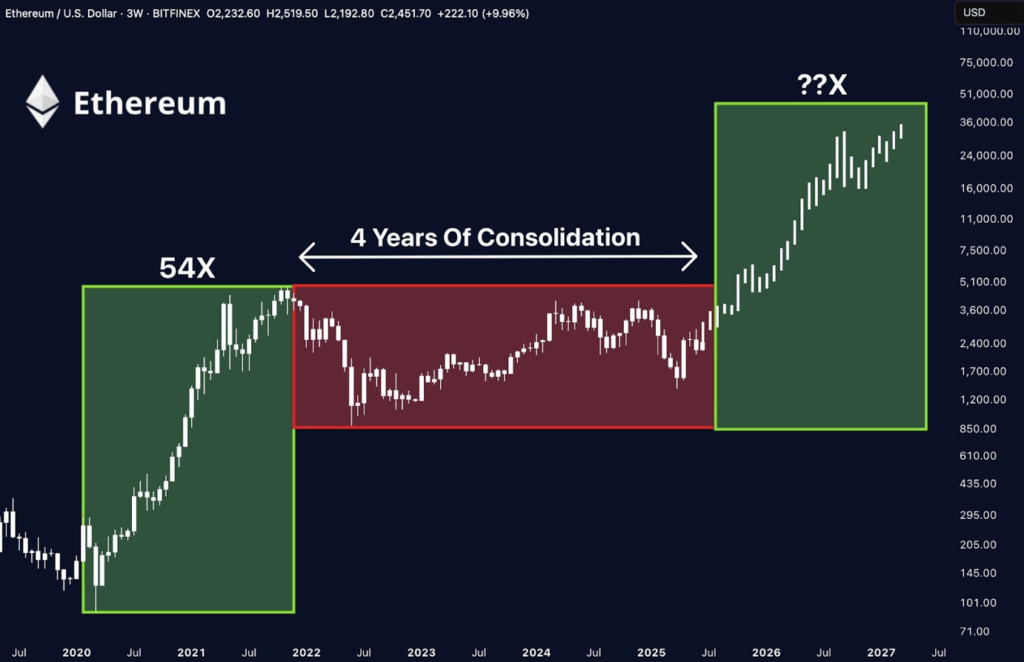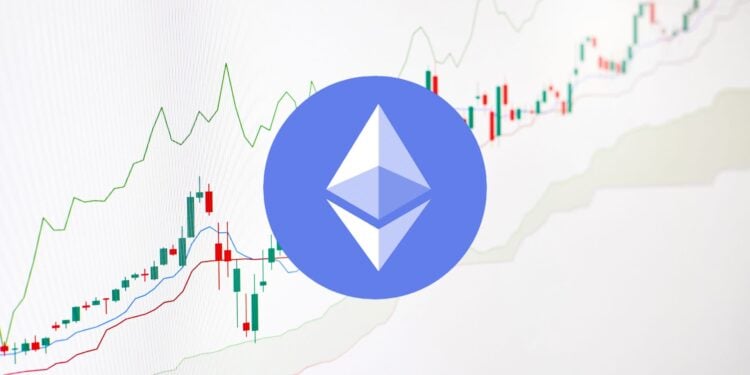- Ethereum may be exiting a multi-year accumulation zone, possibly signaling a major breakout.
- A confirmed move above $2,400 could ignite the next phase of bullish momentum.
- Merlijn The Trader suggests the current setup could echo ETH’s historic 54x rally.
Ethereum’s been dozing off for what feels like forever—but now, it might just be stirring. According to a fresh take from Merlijn The Trader, ETH is showing early signs of a breakout after a long, dull sideways stretch. He calls the past few years a consolidation phase—a kind of deep breath before a big move. You know, that quiet-before-the-storm vibe.
Since 2020, ETH hasn’t really thrilled. Sure, it skyrocketed by 54x at one point, but then it kind of hit cruise control. Prices just shuffled sideways for years. Most folks got bored. Some bailed. But the patient ones? They’ve been slowly stacking coins, quietly betting that another wave is coming.
A Buildup Worth the Wait?
This recent analysis isn’t just suggesting a bounce—it’s hinting at a seismic shift. Merlijn sees this consolidation period as “charging up,” which is trader-speak for that phase where price action goes sleepy while accumulation is happening in the background. Then suddenly, boom—liftoff. His latest chart highlights a new green breakout zone, signaling the lid might finally be popping off.
ETH is already over $2,400 and climbing. That’s not jaw-dropping yet, but if the breakout’s real, we could be seeing the early chapters of a new bull story. And if ETH even dares to mirror that wild 54x move from a few years back… well, let’s just say things would get very interesting very fast.

History Doesn’t Repeat, But…
Okay, no one’s saying Ethereum’s gonna 54x again tomorrow. That’d be nuts. But historical setups like this—long consolidation, subtle accumulation, breakout zones forming—tend to mean something big is brewing. And this one’s got that exact flavor.
Merlijn’s pitch is more about mindset than moonshots. He’s nudging traders to think long game. The big moves don’t always shout when they begin. They sneak up, build pressure, and then—when almost nobody’s paying attention—they explode.














